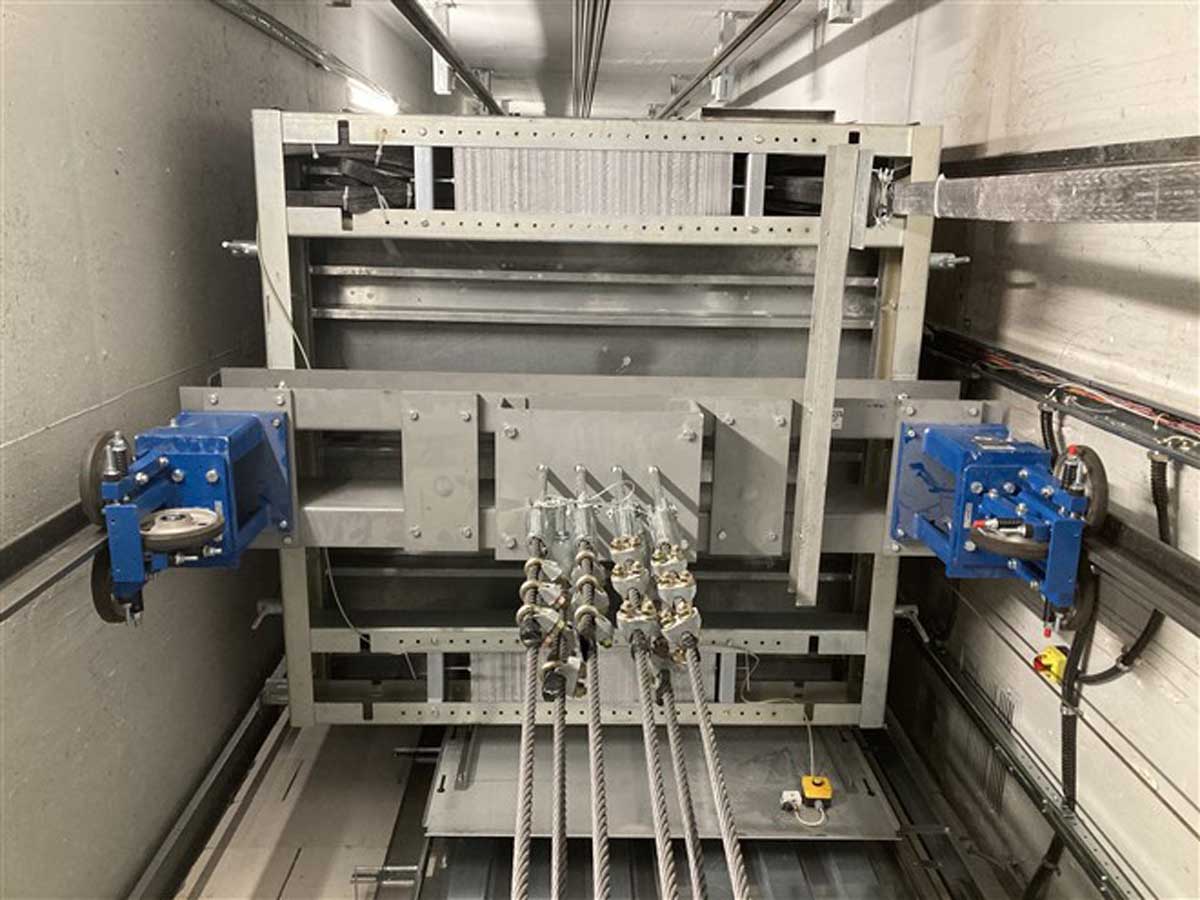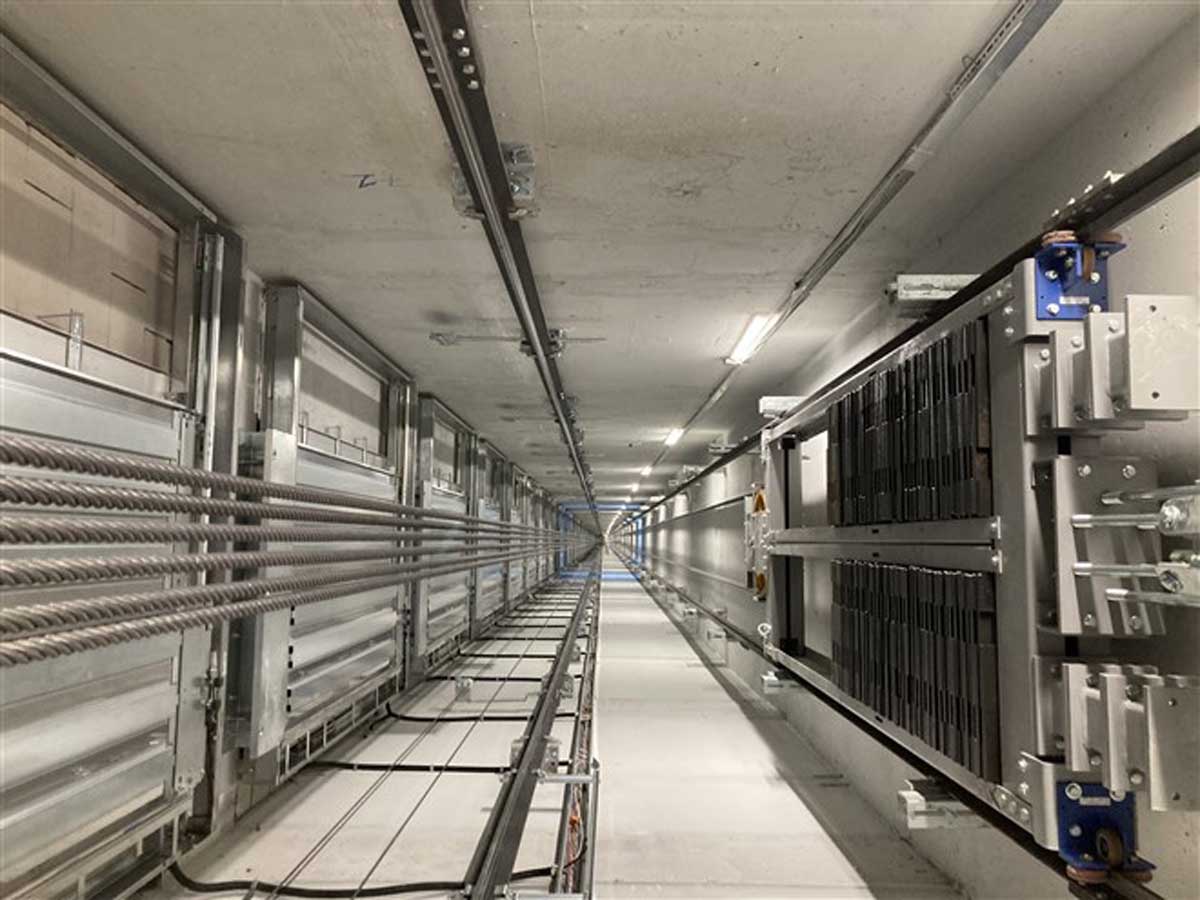According to EN 81-20 standard, when the electrical safety devices in elevators are activated, the elevator machine must not operate or, if necessary, the movement of the elevator must stop immediately.
Electrical safety circuits consist of electrical safety contacts or electrical safety switches. Electrical safety contacts must have a protection level of at least IP4X and must have an operating endurance of at least one million times. There may be one or more electrical safety contacts in an electrical safety device. Electrical safety circuits are circuits consisting of electrical contacts, electrical safety contacts, electronic circuits and programmable electronic components.
Electrical safety devices must be activated by mechanical force in normal operation. You can see the electrical safety devices and requirements for elevators below:
There should be an electrical safety device that is easily visible and accessible from the doors that provide access to the bottom of the elevator shaft or from the bottom of the shaft, and that can stop the elevator. If the shaft bottom height is more than 1.6 m, there should be two stop devices.
If there is a pulley room in the elevator, there should be a stop device near the entrance of the pulley room that works as described in the paragraph above.
If the staircase providing access to the bottom of the shaft is movable and poses a risk of collision with the moving parts of the elevator, there must be an electrical safety device and the elevator must not be operated unless the staircase is in the holding position.



Emergency and inspection doors should be equipped with doors that provide access to a hazardous area when opened to the bottom of the shaft and electrical safety devices that monitor the closed position of these doors.
Due to the recesses in the shaft wall facing the elevator car door, when a mechanical locking device is used on the car door, an electrical safety device must be available to monitor the closed position of the lock. The electrical safety device in question must be deactivated when the door is equipped with an early opening feature, when the level is activated or when the door by-pass device is activated.
When it is necessary to service the elevator machine or brake from inside or above the elevator car, any dangerous movement of the car must be prevented by a mechanical device. The inactive position of this mechanical device must be monitored by an electrical safety device.

If maintenance or servicing of the elevator machine or brake is to be carried out from the bottom of the shaft, the door giving access to it must be lockable and the open position of the door must be monitored by an electrical safety device. If the movement of the cab is prevented by a mechanical device, the electrical safety device must be used to monitor whether the device is active or not.
If the elevator machine and brake are serviced or inspected from a working platform in the shaft and the platform is within the range of motion of the car, and if the counterweight or counterbalance weight and the working platform is moving, it must be monitored by an electrical safety device to ensure that the platform is fully retracted. If the elevator car must move while the working platform is open, the fully open and closed positions of the mechanical stops that limit the movement of the car towards the platform must be monitored by electrical safety devices.
Each stop door must be monitored by an electrical safety device to ensure that it is mechanically locked at least 7 mm. Each stop door must be equipped with an electrical safety device that monitors to ensure that the door is closed. The electrical safety device in question must be deactivated when the early door opening feature or leveling is activated or the door by-pass device is activated.
If there is more than one panel on the landing door and these panels are connected to each other with fasteners such as ropes, chains, belts, etc., it should be checked with an electrical safety device that the door panels without mechanical lock are closed.
The elevator must not move while the car door is open except for early door opening, leveling or activation of the door by-pass device. The elevator car door must be monitored by an electrical safety device to ensure that it is closed.
If there is an emergency hatch or door in the elevator car, it must be monitored by an electrical safety device that the hatch or door is in the locked position. When the emergency door lock is unlocked, the electrical safety device must also stop the adjacent elevator.

There must be a stop switch on the car and the elevator and the automatic doors of the elevator must not operate when the switch is activated. There must be a “STOP” sign on or next to the switch. The stop switch must be no more than 1 m from the exit point on the car.
The elevator car or counterweight resting on the bumper must not move upwards. In such a case, the ropes must slide over the pulley, or the movement of the machine must be stopped by an electrical safety device.
If two ropes or two chains are used as suspension devices, the abnormal extension of one rope or chain must be monitored by the electrical safety device, and the electrical safety device should stop the elevator when a suspension is detected.
If there is a risk of slackening of the suspension rope or chain in positive drive elevators or hydraulic elevators, the electrical safety device must check for slackening and stop the elevator when slackening is detected.
In elevators using balancing ropes, the tension of the ropes must be monitored by an electrical safety device. If the rated speed of the elevator exceeds 3.5 m/s, the rope tensions and the tensioner must be checked, and the electrical safety device must stop the elevator when the tensioner activates.
When the car safety device operates, the electrical safety device installed in the car must stop the elevator machine at or immediately before the car safety device activates.
Immediately before the elevator car reaches the overspeed regulator activation speed in upward or downward direction – if the rated speed of the car does not exceed 1 m/s, it may be at the same time – the electrical safety device on the overspeed regulator or similar activation equipment must stop the elevator machine.

If the overspeed regulator does not automatically return to its normal position when the elevator is returned to its normal position after the safety device has been activated, an electrical safety device must prevent the elevator from operating. However, the emergency electrical intervention controller must deactivate the electrical safety device in question.
The electrical safety device must stop the elevator motor in case the overspeed regulator rope is snapped or over-extended.
If the elevator safety device is activated by means of a safety rope, an electrical safety device must stop the elevator motor in the event of a break or extension of the rope.
If the elevator safety device is activated by means of a lever and the lever is not in the retracted position, the electrical safety device must prevent normal downward movement of the elevator.
If the elevator is equipped with a clamping device and the device is not in the retracted position, the electrical safety device must prevent normal downward movement of the elevator. If the clamping device is equipped with a hydraulic buffer, the fully open position of the buffer must be monitored by an electrical safety device.
The electrical safety device on the stop element must also be activated when the device for protecting the car against upward overspeeding is activated.
In the event of an uncontrolled, unintentional movement of the car, the electrical safety device must detect the uncontrolled movement, at the latest, when the car leaves the unlocking zone. An electrical safety device must be activated when the device that stops the uncontrolled movement of the car is activated.
If the elevator is equipped with a hydraulic buffer and the hydraulic buffer is activated, normal movement of the elevator must be possible only if the hydraulic buffer returns to its normal open position. This must be monitored with the electrical safety device.
If emergency intervention to the elevator is possible with a handwheel and the handwheel is removable, an electrical safety device must be activated when the handwheel is inserted into the machine.

If there is more than one entrance to the elevator machine room or if the elevator has more than one machine room with different entrances, there must be a contactor that can de-energize the elevator motor and this contactor must be monitored with an electrical safety device. The contactor must be capable of de-energizing the largest motor and the other motors together.
If the stroke of the buffer used in the elevator is reduced, it should be checked with the electrical safety device that the elevator slows down when arriving to the terminal floors.
When the landing and car doors are closed and unlocked, leveling and automatic leveling movement of the elevator car is only possible in the unlocking zone. It must be checked with the electrical safety device that movement is limited to the unlocking zone only.
For safe maintenance and inspection of the elevator, there must be an elevator inspection panel over the cabin, at the bottom of the shaft; if the work is to be carried out from inside the cabin, the inspection panel must be in the cabin, and on the platform, if the work is to be carried out from the platform. The elevator inspection switch on the panel must meet the requirements of the electrical safety device. The correct operation of the direction buttons and the “RUN/START” button on the inspection panel must be checked with an electrical safety device.
If the force required to move the car loaded with the rated load in the upward direction is more than 400 N or if the machine is not equipped with a handwheel, the elevator must be equipped with an emergency electric rescue switch. The electric rescue switch on the panel must meet the requirements of the electrical safety device.
For the maintenance of the lock and locking contacts of the landing and car doors, a device that bypasses the landing and car door must be provided in the elevator control panel or emergency and test panel. It must be protected against uncontrolled use by means of a cover, a safety cap or a socket-outlet device. The socket-outlet device must meet the requirements of the electrical safety device.
The stop switches in the elevator inspection panel, elevator machine, elevator test and emergency switch must meet the electrical safety device requirements.
If the device activating the limit switches is connected to the elevator car with indirect elements such as ropes, belts and chains, the extension of these fasteners must be monitored by an electrical safety device. The limit switches must activate an electrical safety device that stops the elevator.
Get more of Elevator World. Sign up for our free e-newsletter.










